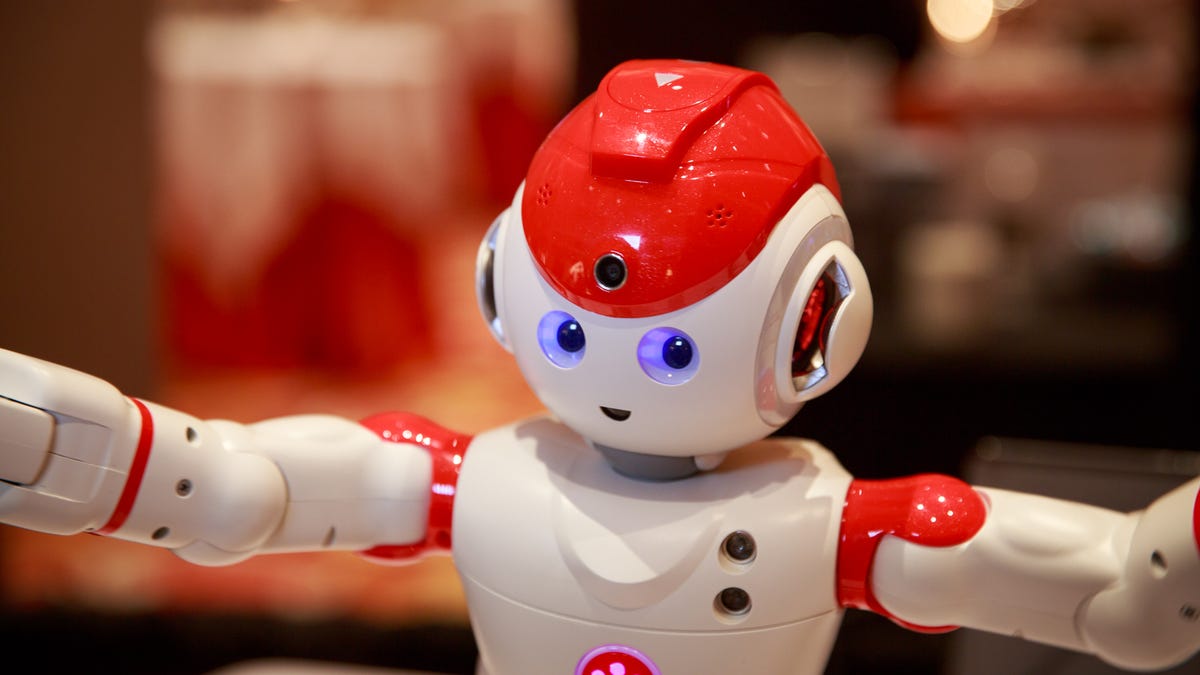The robots are coming to CES, and we can't wait to meet them
Advances in AI mean that 2017 is going to bring the best CES yet for showcasing robotics.

There's nothing better at CES than discovering a robot on the show floor.
Seriously, robots are cool. They are fun. And thanks to the newly released "Rogue One: A Star Wars Story," public sentiment toward droids is off the charts.
It's unlikely the CNET team will stumble across anything as endearing as new Star Wars droid K-2SO as we scour the halls in Las Vegas. Still, there's a ton of robo-excitement in the run-up to CES 2017.
At previous shows, robots have primarily been used as marketing gimmicks or demonstration props. That, says IHS analyst Dinesh Kithany, is set to change.
"What we will see is more from the application point of view," Kithany said. Companies will be looking to explore what consumers can do with a robot, although the robots themselves, he added, will likely be "in the concept stages."
Robots for consumers typically come in one of three categories. One group is service robots, like the Roomba vacuum and pool-cleaning bots, that perform specific tasks. Then there are social robots, like Pepper or Sanbot, that have humanoid features, play games and nag you to do everyday chores, like brushing your teeth. Fully humanoid robots stand at the top of the heap and are being readied to perform care and nursing functions, such as picking people up to help them maintain autonomy and stay in their own homes if they are elderly or injured.
The tech might still be at a nascent stage, but it's expected to take off. Shipments of home robots are set to grow from around 5 million units in 2015 to 13 million units in 2020, according to IHS's Service Robots & Drones report 2016.
Better AI means better robots
Behind any good robot lies good artificial intelligence. And we seen some impressive leaps forward over the past year, including Go-playing algorithms and Jarvis, Mark Zuckerberg's smart home AI butler. That's going to make robots a whole lot more appealing.
Smart assistants have come a long way too and, thanks to the likes of Amazon Echo and Google Home, are now more than just voices on our gadgets. They are precursors to what we can expect to see in consumer robotics.
In one CES panel, a number of robotics experts are on the docket to discuss how improvements in artificial intelligence will help robots become more useful in everyday life. And, of course, evidence of some such improvements will be on show.
"We're showcasing some advanced AI technology to demonstrate that AI is a reality and available to consumers for everyday communication and entertainment," said John Rhee, general manager of Ubtech Robotics, which is set to make several announcements regarding its robotics range.
We can't wait to see this robot demonstrate dexterity and intelligent vision by playing chess.
Similarly, Austrian company Robart will use CES to show off its autonomous navigation software for household robots.
The system, designed for service robots, will allow bots to "recognize their surroundings and communicate intuitively with the user," CEO Michael Schahpar says. "They will learn ever better and adapt to changing surroundings."
Taiwan's Industrial Technology Research Institute is also set to demonstrate some essential robotic skills involving computer vision at the show. Researchers will have a robot distinguish between various chess pieces and their locations on the board, as well as between various coffee cups, their locations and fill levels.
Descending into uncanny valley
Hanson Robotics, the maker of realistic humanoid robots that feature a flexible, responsive skin called "frubber," is somebody we'll keep a close eye on at CES. A company spokesman says customers are keen to get hold of humanoid robots with lifelike facial movements.
Earlier this year, Hanson showed off its Sophia robot, which is capable of performing a full range of human facial expressions. At CES, Hanson is due to give its very first public demonstration of its Professor Einstein robot.
Others are similarly optimistic about this robot form factor.
"2017 is the year in which we will begin to see humanoid robots become home companions," said Ubtech's Rhee. His company is responsible for creating Alpha 2, a short humanoid social robot designed to make household life easier by setting reminders and controlling smart home devices like lights and locks.
A well-rounded smart pal for your smart home?
If you're hoping you'll find the ultimate robot butler or a reprogrammed KX-Series security drone -- it's a Star Wars thing and we're really into Star Wars -- at CES, this probably won't be your year.
TankBot is the first Jimu robot to run on tank treads.
Still, you can expect to see a host of new consumer robots focused on entertainment and education, especially for teaching kids to code. One example: New designs of Ubtech's Jimu robots that offer the familiar snap-together programmable creatures but with increased mobility.
We'll also likely see a number of companies showcasing hardware and software brought together by AI. These projects will give us a glimpse of the skills future robots might have and that could persuade people to think about bringing one home.
At the very least, we'll find some cute bots to dream about.

